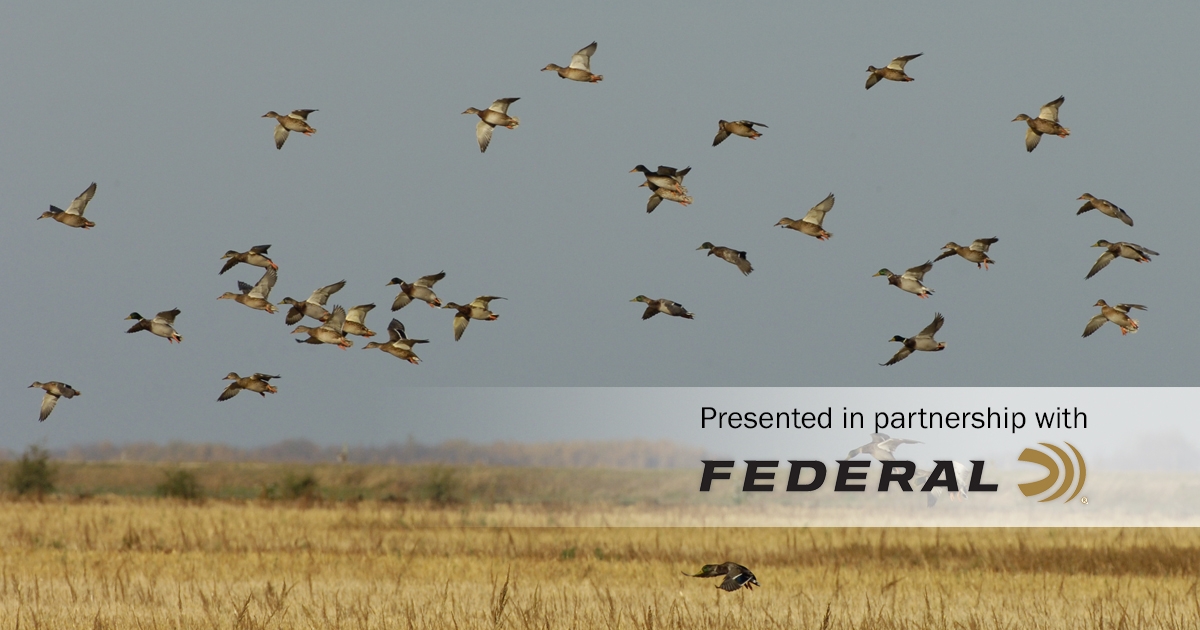Delta Waterfowl Forecasts a Strong Fall Duck Flight

Excellent breeding conditions in the Dakotas and Manitoba helped produce an abundance of ducks, which should benefit hunters this season
“Conditions were good in key regions for breeding ducks, and production was strong overall. If we get a few timely cold fronts, then it could be a truly memorable season.” — Dr. Frank Rohwer, president of Delta Waterfowl
BISMARCK, NORTH DAKOTA — Delta Waterfowl forecasts that a mix of average to above average breeding conditions in the prairie pothole region, combined with a stable population of breeding ducks, will result in a strong fall flight for the upcoming waterfowl season. Importantly, The Duck Hunters Organization expects improved flights of dabbling ducks over 2019, especially for blue-winged teal, mallards and gadwalls.
Delta’s analysis is delivered despite cancellation of the 2020 Waterfowl Breeding Population and Habitat Survey — a key barometer of the fall flight that’s otherwise been conducted annually since 1955 by the U.S. Fish and Wildlife Service and Canadian Wildlife Service. Fortunately, a survey was successfully conducted in an all-important region for nesting waterfowl: The North Dakota Game and Fish Department estimated a statewide breeding population of 4 million ducks, an 18 percent increase over 2019.
“The Service’s cancellation of the survey due to Covid-19 means we don’t have estimates of breeding duck populations or pond (wetland) counts this year,” said Dr. Frank Rohwer, president of Delta Waterfowl. “However, a far more important metric for predicting a quality hunting season is duck production — that’s the overriding factor in whether we’ll see a good fall flight.”
Based on long-term data indicating that most duck populations are well above average (including a 2019 estimate of 38.9 million breeding ducks, 10 percent above average), and the breeding habitat conditions observed across critical regions this spring, Delta concludes that most duck species experienced good to great production. Overall, Delta estimates that spring habitat conditions were excellent in the Dakotas, very good in Manitoba, good in Alberta and poor in Saskatchewan.
Therefore duck production among species likely varied based on their regional preferences.
Delta expects that mallards took advantage of wet conditions in the Dakotas and prairie Manitoba, which will send plenty of greenheads down the Central and Mississippi flyways. This was reflected in the North Dakota survey, which estimated 872,982 breeding mallards, the 18th highest index recorded.
“Mallards almost never have a terrible year because their nesting range is massive, and they renest aggressively throughout the breeding season,” Rohwer said. “I don’t think it will be a phenomenal fall mallard flight, but it should be very good.”
Click here to read more…
For more information, contact John Devney, senior vice president (888) 987-3695 ext. 5218, jdevney@deltawaterfowl.org, or Dr. Frank Rohwer, president (888) 987-3695 ext. 5217, frohwer@deltawaterfowl.org.
Delta Waterfowl Foundation is The Duck Hunters Organization, a leading conservation group working to produce ducks and ensure the tradition of duck hunting in North America. Visit deltawaterfowl.org.

Irwin Greenstein is Publisher of Shotgun Life. Please send your comments to letters@shotgunlife.com.


Comments